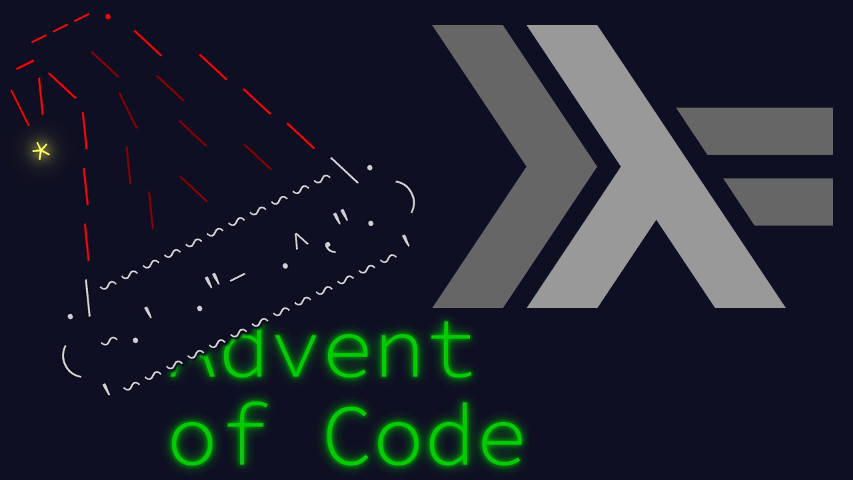Next up, Advent of Code gives us “Resonant Collinearity” for day 8. Retrospectively, slightly disappointing, as there’s… really nothing to it, we’ll just implement. Here’s our imports, to keep up the literate Haskell vibe.
import Control.Monad (guard)
import Data.Array (Array,listArray,assocs,bounds,inRange)
import Data.Function (on)
import Data.List (delete,groupBy,nub,sort)
import Data.Maybe (mapMaybe)
import Linear.V2 (V2(V2))
type V = V2 IntMost of the story here is actually the parsing. Let’s first ingest the grid as such.
parse :: String -> Array V Char
parse s = listArray (V2 1 1,V2 h w) (concat raw) where
raw = lines s
h = length raw
w = length (head raw)Now we really want to know where the antennas are. Grouped by frequency.
nodeGroups :: Array V Char -> [[V]]
nodeGroups =
(map . map) snd .
groupBy ((==) `on` fst) .
sort .
mapMaybe (\(i,e) -> (e,i) <$ guard (e /= '.')) .
assocsIt reads bottom-to-top as per usual point-free notation: pair up grid indices with antenna frequency if any, keep only those with an actual antenna there, sort by frequency, group by frequency, keep only indices.
Now solving for the problem is a simple matter of counting distinct antinode positions.
solve :: Array V a -> ((V,V) -> [V]) -> [[V]] -> Int
solve g antinodes =
countUnique .
concatMap
( concatMap (takeWhile (inRange (bounds g)) . antinodes) .
pairs
)Ok, ok, that’s a mouthful. From a high level, we’re operating per frequency. For each of those, we receive a list of coordinates. We generate all ordered pairs from them, and the list of induced antinodes from there, stopping when they step out of grid bounds.
We merge them all cross-frequency, and count the resulting distinct positions.
This uses two utterly generic helpers:
pairs :: Eq a => [a] -> [(a,a)]
pairs xs = [ (x,x') | x <- xs, x' <- delete x xs ]
countUnique :: Eq a => [a] -> Int
countUnique = length . nubNow how do we induce antinodes? That much depends on the problem half we’re dealing with.
part1,part2 :: (V,V) -> [V]In part 1, the next antinode from a node is the point of symmetry over its counterpart.
part1 (a,b) = [b+b-a]In part 2, the antinodes form a (dotted) line extending infinitely (to the point of remaining on the grid) past the counterpart.
part2 (a@(V2 x1 y1),V2 x2 y2) = iterate (+v) aThis is actually the part where the puzzle was mildly disappointing. Paraphrasing the problem statement, we want “every grid position exactly in line”. In the normal world, In the normal world, this means the very simple following grid…
A.A…should have the following list of antinodes:
###Because they’re all exactly on the same horizontal line. Right?
Well, maybe that’s the case. But it’s not present in my input, and neither is it in that of anyone I asked. So my countermeasures are entirely useless.1
where
d = gcd (x2-x1) (y2-y1)
v = V2 ((x2-x1) `div` d) ((y2-y1) `div` d)Oh well.
One thing to observe in the2 implementation, though, is the reason for using ordered pairs. They allow me to factor the antinodes’ bounds checking in a way that maximizes code re-use between parts 1 and 2. Not exactly life-changing, but makes for a nicer write-up.
Anyway, that’s about it by now, right?
main :: IO ()
main = do
g <- parse <$> getContents
let nodes = nodeGroups g
print $ solve g part1 nodes
print $ solve g part2 nodesThis concludes today’s solution. See you tomorrow!



